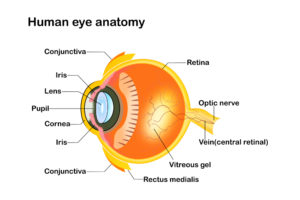What Is a Vitrectomy?
Submitted by Elman Retina Group on January 3, 2020
 Vitrectomy is a procedure that involves the removal of the vitreous — a gel-like substance that fills the inner eye. A vitrectomy is performed along with other surgical techniques in order to reach the retina and treat a variety of serious vision problems. In this post, the team at Elman Retina Group gives a detailed overview of the vitrectomy procedure.
Vitrectomy is a procedure that involves the removal of the vitreous — a gel-like substance that fills the inner eye. A vitrectomy is performed along with other surgical techniques in order to reach the retina and treat a variety of serious vision problems. In this post, the team at Elman Retina Group gives a detailed overview of the vitrectomy procedure.
How Vitrectomies Are Performed
A vitrectomy is done to treat many retinal conditions, such as:
- Retinal detachment
- Vitreous hemorrhage
- Macular hole
- Diabetic retinopathy
- Epiretinal membrane (“macular pucker”)
- Certain traumatic eye injuries
- Infections of the eye (“endophthalmitis”)
The vitreous is removed and replaced with a saline solution. Sometimes an oil or gas bubble is used instead to stabilize the pressure of the eye.
In many cases, vitrectomies are used in combination with other surgical techniques necessary to access and fix the retina. The removal of the vitreous is often just one portion of the overall retinal surgery.
Vitrectomies may be used in conjunction with laser surgery on the retina, glaucoma surgery or cataract surgery. Using a vitrectomy as a secondary procedure can increase the effectiveness of the primary procedure in some cases.
What to Expect During a Vitrectomy
A vitrectomy is typically performed on an outpatient basis using general or local “twilight” anesthesia. Your doctor may provide specific recommendations before surgery about whether to abstain from eating or drinking the day of surgery and whether to take your usual medications or supplements.
Your eye surgeon will make a small incision in the eye to access the inside of the eye (think of the procedure as kind of like a laparoscopic surgery within the eye). The vitreous will be removed along with any damaged tissues.
Other procedures, such as laser therapy to repair retinal blood vessels or peeling abnormal tissue off the retina, can then be performed. Finally, a sterile solution or bubble is placed in your eye to keep the retina in place.
Recovering From Vitrectomy
You will be given an eye patch to wear following surgery. You should generally expect to avoid work and other demanding activities for 48 hours or so after surgery.
If a gas bubble is used in your procedure, you may be asked to lay in a specific position for a certain period of time. This is done to manipulate the gas/oil bubble to exert pressure directly on the healing retina for a certain period of time.
The day after surgery, you’ll visit your surgeon for your first postoperative visit. Your doctor can give you a detailed explanation of what to expect during your recovery period, explain certain ways to position your head and give you special eye drops to use.
Learn more about vitrectomy by scheduling a consultation with one of our Baltimore retina specialists. Contact the Elman Retina Group to schedule your appointment today.



